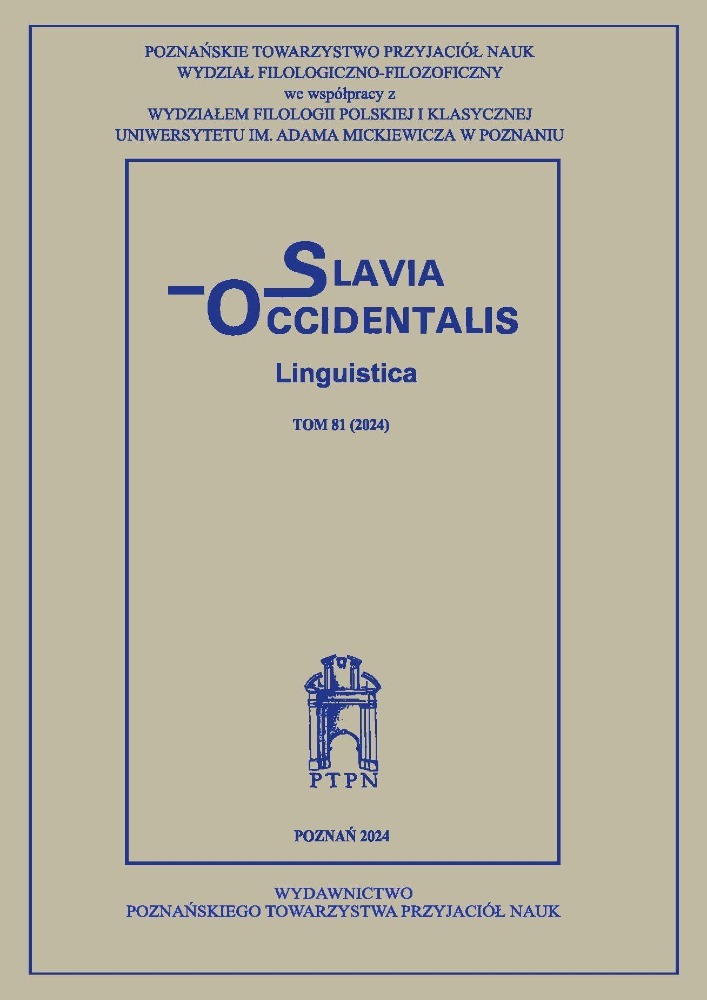Abstrakt
Lower Sorbian is a Slavic language that has become almost extinct. As is the case of Upper Sorbian, there are no academic estimations of the current number of speakers of Lower Sorbian. Many German-language publications, including texts published by governmental institutions, overestimate the numbers of Lower Sorbian speakers, they are outdated or simply wrong. The authors take an innovative approach, initially defining a competent speaker of a minority language, and finally coming up with an estimation of the number of competent speakers of Lower Sorbian in 2024 based on latest data.
Bibliografia
Andree R., 1874, Wendische Wanderstudien : Zur Kunde der Lausitz und der Sorbenwenden, Stuttgart.
Asmus S., 2020, 1.000.000 speakers of Welsh in Wales by 2050?, workshop Minority Languages in a Globalized World, Praha (URL: https://www.academia.edu/42378552/1_000_000_Welsh_speakers_by_2050).
Council of Europe, 2024, Common European Framework of Reference for Languages (CEFR), Strasbourg, URL: https://www.coe.int/en/web/common-european-framework-reference-languages.
Dołowy-Rybińska N., 2012, Witalizacja i rewitalizacja – strategie zachowania języków mniejszościowych na Górnych i Dolnych Łużycach, w: Szewczyk B. (red.), Serbołużyczanie wobec tradycji i wyzwań współczesności. Język – Litertura – Kultura, Katowice, s. 39-57.
Elle L., 1995, Sprachenpolitik in der Lausitz, Bautzen.
Elle L., 2000, Die heutige Situation der sorbischen Sprache und Konzepte zu ihrer Revitalisierung, w: Šatava L., Hose S. (red.), Erhaltung, Revitalisierung und Entwicklung von Minderheitensprachen, Bautzen/Budyšin, s. 17-21.
Hasacki M., Kliem G., 2022, ZORJA, Domowina Niederlausitz Projekt gGmbH, URL: https://zorja.org.
Jodlbauer R., Spiess G., Steenwijk H., 2001, Die aktuelle Situation der niedersorbischen Sprache, Cottbus.
Lewaszkiewicz, T, 2014, Dolnołużycki i górnołużycki – języki zagrożone czy wymierające?, „Slavia Occidentalis“ 71/1, s. 37-53.
Melcher B., 2024, Serbske familije a dalejdawanje dolnoserbšćiny ako mjeńšynowa rěc, „Serbska šula“ 77, z. 1, s. 2-6.
Ministerium für Bildung, Jugend und Sport des Landes Brandenburg (MBJS), 2022, Rahmenlehrplan für die gymnasiale Oberstufe : Teil C : Sorbisch/Wendisch, Landesinstitut für Schule und Medien Berlin-Brandenburg, Ludwigsfelde.
Moseley C., 2010, Atlas of the Worldʼs Languages in Danger, Paris.
Muka A., 1884, Delnjołužiske Serbowstwo w lěće 1880, „Časopis Maćicy Serbskeje“ 37, z. 1, Budyšin.
Norberg M., 2019, Projekt „Serbski powědajuce familije“ w RCW, „Serbska šula“ 72, z. 3, 66-70. DOI: https://doi.org/10.1353/dss.2019.0011
Schiemann M, Scholze D. (red.), 2019, Die Sorben in Deutschland, Bautzen/Budyšin.
Smoler J.A., 1843, Próznicki Sersḱego ludu we górejcnych a dołojcnych Łužycach, Grimma.
Tschernik E., 1954, Die Entwicklung der sorbischen Bevölkerung von 1832 bis 1945, Berlin. DOI: https://doi.org/10.1515/9783112756690
Licencja
Prawa autorskie (c) 2024 Till Wojto, Sabine Asmus

Utwór dostępny jest na licencji Creative Commons Uznanie autorstwa – Użycie niekomercyjne – Bez utworów zależnych 4.0 Międzynarodowe.

